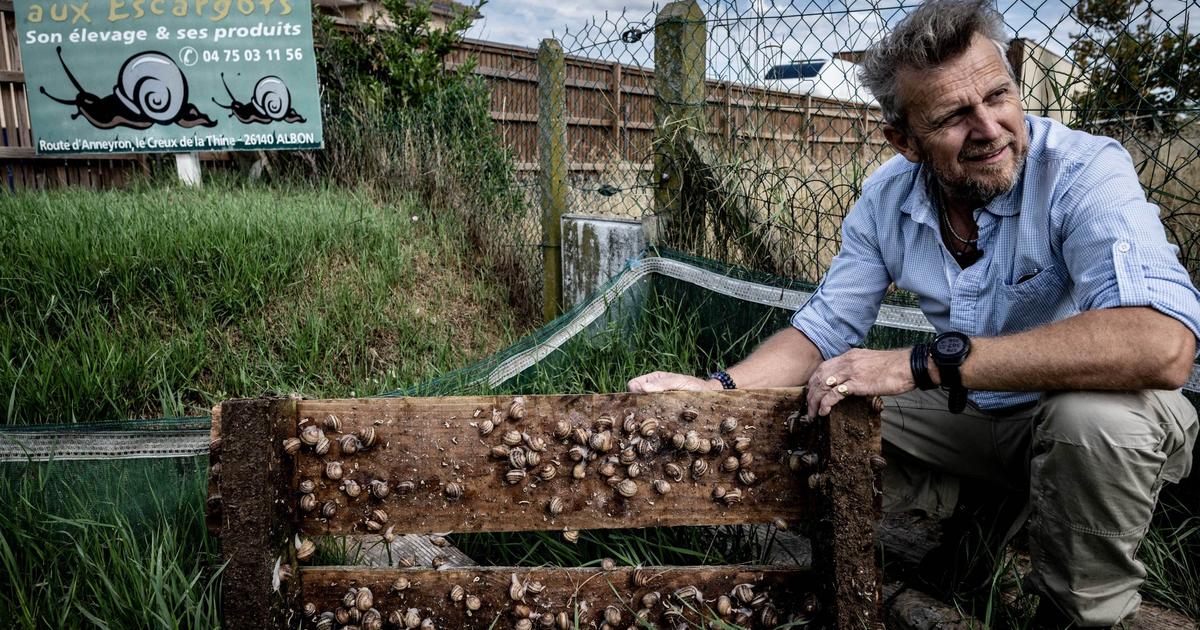Artistic outrage or real intuition?
Patrice Lambert is convinced that he holds "
the beauty secret of Mona Lisa
", the famous
Mona Lisa
by Leonardo da Vinci, the Florentine genius.
According to him, it would be in the slime of the hundreds of thousands of snails that he breeds in the Drôme for organic cosmetics.
To read also
The Mona Lisa
victim of a cream pie;
36-year-old man arrested
It is in the tranquility of Creux-de-la-Thine, in the rural town of Albon, near Valence, that its "
Gros Gris
" breed, are born and grow, cousins of the common species Helix Aspersa, recognizable by their golden shells streaked with blue lines.
Read alsoAn “exceptional” reproduction of the Mona Lisa dating from 1600 soon to be auctioned in Paris
Its residents, glued under wooden planks resting on the trenches of their breeding grounds, are invisible at this season.
They protect themselves from the heat to avoid drying out.
The breeder and his team water the pens at night to keep them cool.
The gastropods are chosen and collected in a basket for the sampling sessions, done delicately by hand with a rod.
It is necessary to stimulate its foot so that the animal secretes in abundance threads of drool containing collagen, glycolic acid, allantoin or tubulin - soothing, repairing and regenerating proteins for the skin.
Once the mucus has been collected in a jar, the snail returns to its park.
"
One day, I hired a young man who was a shepherd and who had eczema on his hands.
And in contact with snails in the parks for two years, he had none left
, ”says this 53-year-old enthusiast.
“
We said to ourselves: we have to look, we have to understand, we have to know why
,” adds the breeder, whose questions led him to Paris to consult researchers from the National Museum of Natural History.
To support his theory, Patrice Lambert does not hesitate to revive a persistent historical noise: “
When we try to retrace a little bit the use of the snail in cosmetics, it goes very far in fact.
There's a little anecdote that says that Mona Lisa was her beauty secret, that's it.
She was already using snail secretions
”.
Based on this historical speculation, the activity of his “
Snail Farm
”, hitherto focused on food, evolved into cosmetics.
His great pride: to have been, in 2007, the first French snail grower certified in organic farming.
From Vinci to the cosmetics industry...
Since then, among the 350 farms in the country, with an annual production of 1,200 tonnes
of “live snails
”, 15% to 20% have gone organic, according to Christophe Simoncelli, national manager of the “
Aspersa
” producer group.
Several times a day, the snail farmer checks the good growth of the gastropods by measuring the size of the shells and sometimes notes disparities which he explains by their great "
sensitivity
" to their environment.
"
We know that the snail acts as a catalyst: it is very close to the ground, it lives on the ground and will draw minerals from it
", explains Patrice Lambert.
“
The interest of organic heliciculture is precisely to ensure that the
» within the framework of organic farming «
which gives meaning to life and to the quality approach
», underlines the Drômois who uses organic food flour which he throws in his parks with the gesture of the sower.
Anxious to "
minimize animal suffering
", Patrice Lambert and his team are also committed to "
not stressing
" their snails when it comes time to collect the precious mucus.
Once processed, it costs 45 euros for a 30 ml serum, containing 93% drool.
"
Snail slime is unknown to the general public and rare on the face care market ", explains Fabrice Pierron, the founder of the "
certified organic
" cosmetics brand.
Mademoiselle Agathe, partner of the Ferme aux Escargots since 2014. Convinced of the merits of these "
healthy products
", this 49-year-old entrepreneur who claims to be at the origin of "
helicitherapy
" in France recalls that "
90 % of cosmetics still use mineral oils from petrochemicals
”.
In 2019, the organic cosmetics market represented 7 billion euros worldwide, including 2.8 billion in Europe, according to its figures.

